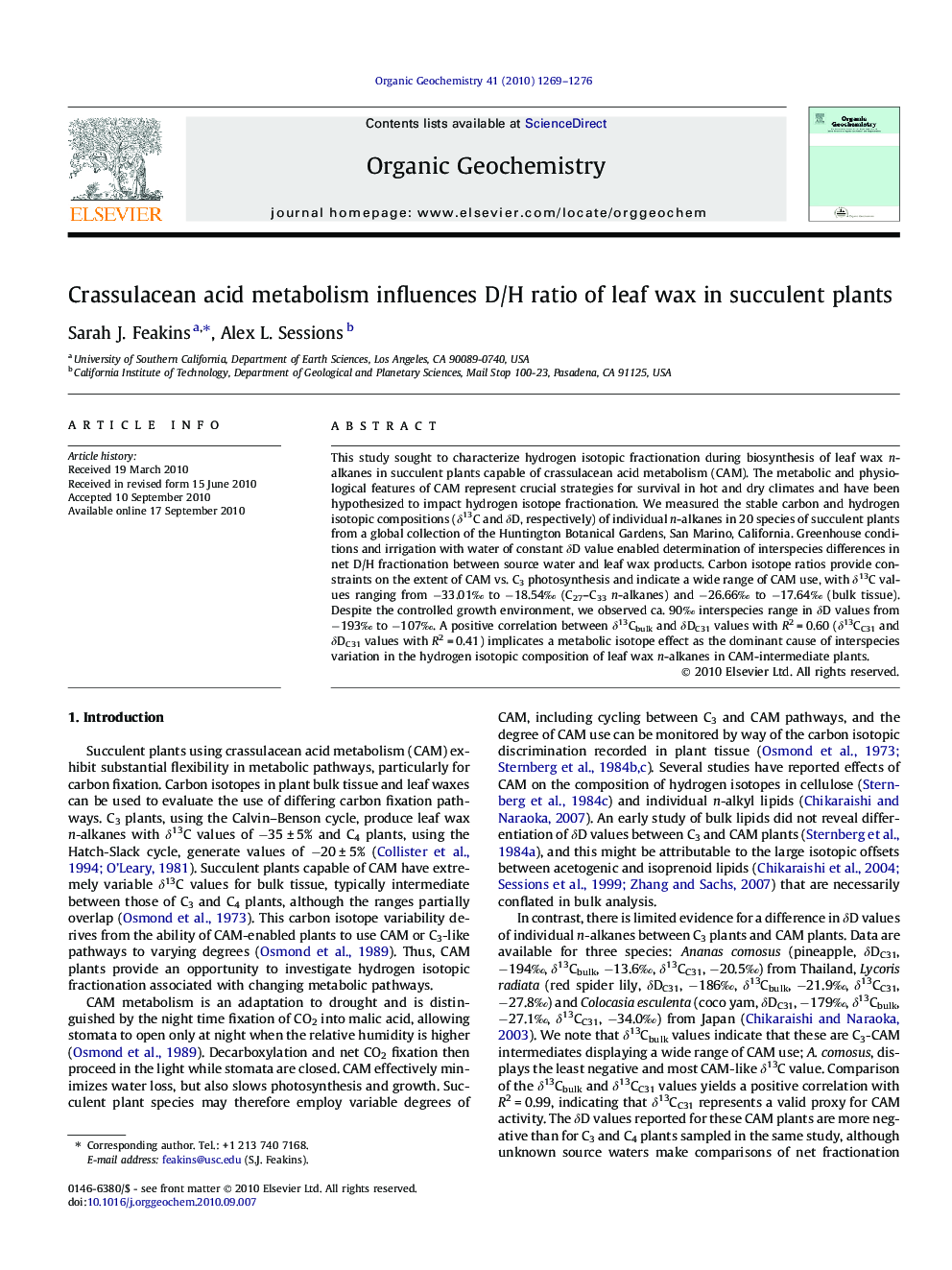| Article ID | Journal | Published Year | Pages | File Type |
|---|---|---|---|---|
| 5162562 | Organic Geochemistry | 2010 | 8 Pages |
Abstract
This study sought to characterize hydrogen isotopic fractionation during biosynthesis of leaf wax n-alkanes in succulent plants capable of crassulacean acid metabolism (CAM). The metabolic and physiological features of CAM represent crucial strategies for survival in hot and dry climates and have been hypothesized to impact hydrogen isotope fractionation. We measured the stable carbon and hydrogen isotopic compositions (δ13C and δD, respectively) of individual n-alkanes in 20 species of succulent plants from a global collection of the Huntington Botanical Gardens, San Marino, California. Greenhouse conditions and irrigation with water of constant δD value enabled determination of interspecies differences in net D/H fractionation between source water and leaf wax products. Carbon isotope ratios provide constraints on the extent of CAM vs. C3 photosynthesis and indicate a wide range of CAM use, with δ13C values ranging from â33.01â° to â18.54â° (C27-C33n-alkanes) and â26.66â° to â17.64â° (bulk tissue). Despite the controlled growth environment, we observed ca. 90â° interspecies range in δD values from â193â° to â107â°. A positive correlation between δ13Cbulk and δDC31 values with R2 = 0.60 (δ13CC31 and δDC31 values with R2 = 0.41) implicates a metabolic isotope effect as the dominant cause of interspecies variation in the hydrogen isotopic composition of leaf wax n-alkanes in CAM-intermediate plants.
Related Topics
Physical Sciences and Engineering
Chemistry
Organic Chemistry
Authors
Sarah J. Feakins, Alex L. Sessions,
